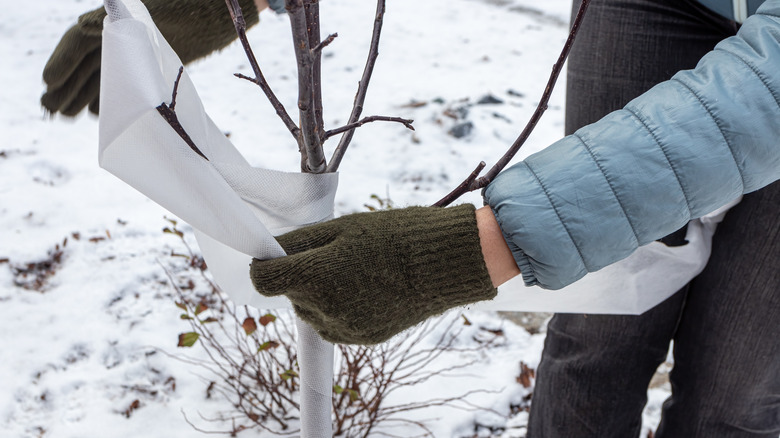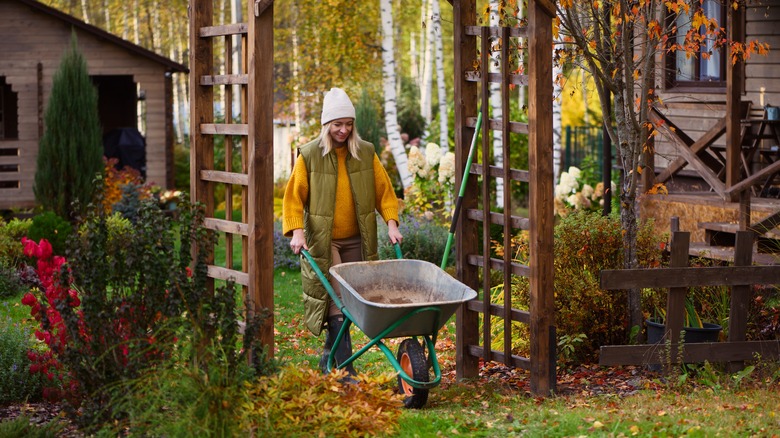Garden Trees, Shrubs & Vines
Joanna Marie
In winter, mice can cause significant harm to your fruit trees. A cover of snow provides them with a shield that allows them to go undetected. With a high population of mice and excessive snow, the risk increases, potentially leading to severe damage or even the death of the trees. Mice are particularly attracted to the bark of trees during these colder months, as it offers both sustenance and shelter. This bark consumption disrupts the vital nutrient flow from the leaves to the roots, essentially starving the tree. This danger is amplified in young trees where the bark is softer and more accessible to rodents. The constant gnawing can cause girdling — a complete removal of bark from around the trunk, which can be fatal to the tree. Additionally, mice may also target tree roots, especially those near the surface. While less noticeable, damage to the roots can have a devastating impact on the tree’s stability and absorption of nutrients and water.
While some trees and shrubs are capable of regenerating after such damage, this process is often slow and can take several years. This delayed recovery emphasizes the importance of preventing damage in the first place. But if your fruit trees frequently face the threat of mouse damage during the winter, there are effective ways to protect them.
Factors to consider while combating mice

photowind/Shutterstock
Because heavy snowfall can make it challenging to detect mice until the damage is already significant, proactive measures could be necessary. One proven preventive method is wrapping the trunk and lower branches of young trees with screen wire or hardware cloth. In addition, when building the physical barrier, it’s best to bury the wire wrap deep below the ground and extend it well above the potential snow line. This setup is crucial, especially for growing fruit trees because it stops mice from attacking the branches, even under a layer of snow.
However, for successful prevention, it’s also important to consider environmental factors that might attract mice to your fruit trees. If your orchard or garden is located near fields or wooded areas, you may be especially susceptible to infestations from nearby field mice. Mice are also attracted to areas that provide warmth and sustenance. Piles of leaves, compost heaps, and dense ground cover can offer ideal shelter for mice, especially during the cold months. Other factors that draw mice to lawns during the winter include the availability of food sources like bird feeders and pet food bowls, which can inadvertently become feeding stations for these rodents.
Additional strategies to deter mice

Maria Evseyeva/Shutterstock
Beyond physical barriers, one effective way to deter mice from your fruit trees is to mow the grass as low as possible around the trees. This reduces the amount of shelter available which makes the area less inviting. It’s also important to remove potential food sources, so make sure fallen fruit and nuts are promptly cleaned up. Some experts recommend creating a clear, vegetation-free zone around the base of your trees. Keep the area clear for at least a 1- to 2-foot radius. This open space acts as a deterrent that makes it less appealing for mice to hide or nest near the tree. It also gives you a better view of the tree base, allowing for early detection of any rodent activity.
You could also consider planting mouse repellent plants, or even using baits. There are commercial products specifically designed to deter rodents, but it’s essential to choose those that are safe for your trees and the environment. In areas with persistent mice problems, natural predators like owls and other birds of prey can help. You can install a few owl boxes to encourage these animals to take up residence near your orchard. This will provide a natural and sustainable solution to the problem. Lastly, regularly inspect your trees throughout the winter. This way, you can spot early signs of damage and take immediate action. If the infestation is heavy, it may be best to call in a pest control professional.



